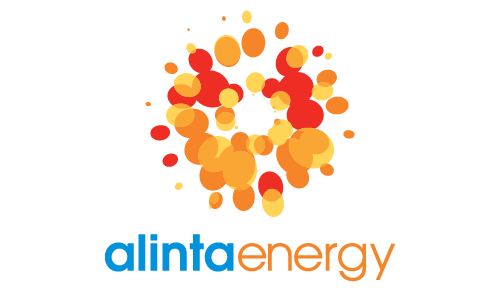South Australia has some of the highest energy costs in Australia, so keeping bills down is a top priority for many residents. If your energy costs are starting to bite, comparing electricity and gas plans in your area can help you find a better deal and save money.
How does SA’s energy system work?
South Australia has a deregulated energy market, which means you can choose your energy provider and plan. While the state has just one electricity distributor and one gas distributor, you have a range of retailers to pick from.
These retailers set their own prices and offer a variety of plans with different rates, discounts and incentives.
This setup lets you shop around, compare plans and switch providers to find the energy deal that best fits your needs.
Types of energy plans
What is the average energy bill in SA?
South Australia historically has higher energy bills than other parts of the country, though how much you’ll pay for electricity depends on a range of factors like household size, energy use, time of year and your retailer and plan.
Based on the DMO, we calculated that the average electricity bill for a three-person household consuming around 5,000 kWh is about $2,301 in South Australia – roughly $192 per month. This is significantly higher than the national average, which sits at approximately $1,994 per year.
If your bill is higher than this but your household uses less electricity, you could be on a more expensive plan than necessary – and there may be better options available for you.
How to compare electricity in SA
How electricity plans work in SA
There are two main types of electricity plans in South Australia:
Standing offer: if you don’t choose an electricity plan yourself, you’ll be placed on a default plan called the standing offer. This plan has a maximum price cap known as the Default Market Offer (DMO), which is set each year by the Australian Energy Regulator (AER) for households and small businesses in SA, NSW and South East QLD. While the DMO protects consumers from excessive energy prices, standing offer plans tend to be more expensive than other electricity plans on the market.
Market offer: market offers are electricity plans provided by retailers that compete in the market to attract customers with a variety of pricing options and features. They offer competitive pricing that is typically lower than the DMO, as well as discounts, incentives and benefits not available on standing offer plans, giving you a choice of electricity plans and potentially saving you money on your bills.
Types of electricity tariffs in SA
A tariff is the pricing structure that determines how much you pay for your electricity. Choosing the right tariff for your energy usage can help you save on your energy bill.
Common types of electricity tariffs include:
- Single rate: the price for electricity is the same no matter what time of day you use it.
- Time of use: prices vary depending on the time of day, with electricity costing more during peak hours and less during off-peak hours.
- Demand: charges are based on your highest usage during peak time periods, usually measured in 30-minute blocks.
- Controlled load: this tariff applies to certain high-energy appliances like hot water systems or pool pumps on separate circuits, which are only powered during set times, usually when electricity demand is lower.
Peak times
In July 2025, SA Power Networks adjusted peak electricity times in the state. New times are:
- Peak: 6am–10am, 4pm–12am
- Off-peak: 12am–6am
- Shoulder: 10am–4pm
Electrify tariff
SA Power Networks trialled this new tariff during 2024-25 and has proposed making it a permanent part of the tariff structure in South Australia. Electrify is designed for customers who have flexible use of electric appliances such as EVs, heat pumps or batteries and above-average electricity consumption. It gives them access to cheaper electricity during off-peak times of day, encouraging them to use more of their energy outside peak demand times.
Smart meter rollout in SA
Many tariffs are only available with a smart meter to monitor when you use energy. A smart meter is an advanced electricity meter that records your energy usage in real time and sends this data remotely to your energy provider. This allows for more accurate billing and enables energy plans that charge based on when you use electricity.
As of late 2024, South Australia had 488,325 remotely-read smart meters installed, representing about 46.5% of all electricity meters in the state. This number is set to grow as the government pushes for universal smart meter deployment across the National Electricity Market by 2030.
Since 1 June 2025, households can no longer opt out of smart meter installation. The accelerated rollout will begin in December 2025, aiming for completion by 2030.
Cheapest electricity plans in SA
As of November 2025, these are some of the cheapest electricity plans available in Adelaide through Savvy. The lowest-priced plan is currently 17% cheaper than the DMO reference price.
| Retailer | Plan | Estimated monthly cost | Estimated annual cost |
|---|---|---|---|
| ENGIE | ENGIE Perks | $163 | $1,909 |
| Momentum Energy | Warm Welcome | $168 | $1,969 |
| Lumo Energy | Lumo Basic | $170 | $1,994 |
| Powershop | Power House | $176 | $2,068 |
| AGL | Smart Saver | $182 | $2,140 |
| EnergyAustralia | Balance Plan | $182 | $2,140 |
| OVO Energy | The One Plan | $183 | $2,150 |
| Alinta Energy | HomeDeal Essential | $190 | $2,232 |
| Source: Econnex, November 2025 Estimated electricity prices based on average 10.96 kWh daily usage |
|||
Electricity providers in SA
South Australia has one main electricity distributor, SA Power Networks, though some remote electricity distribution systems are provided by other companies.
You don’t have a choice of distributor as this is fixed to the area – however, you can choose your electricity retailer.
Retailers operating in South Australia include:
- 1st Energy
- AGL
- Alinta Energy
- Amber Electric
- CovaU Energy
- Diamond Energy
- Energy Locals
- EnergyAustralia
- ENGIE
- GloBird Energy
- iO Energy
- Kogan Energy
- Lumo Energy
- Momentum Energy
- Nectr
- Origin Energy
- OVO Energy
- Pacific Blue
- Powershop
- RAA Energy
- Red Energy
- Sumo
- Tango Energy
- ZEN Energy
Solar power in SA
As of October 2025, more than 400,000 South Australian households have solar panels installed – meaning around 54% of homes in the state now have solar, the highest proportion of any state or territory in Australia.
Feed-in tariffs
If you have solar panels, you may be able to get paid for the extra energy you generate but don’t use, by sending it back to the grid, known as a feed-in tariff (FiT). Any unused electricity your panels produce can be sold to your retailer at a set rate. As of November 2025, feed-in tariffs in South Australia are up to 10c per kWh.
Export tariffs
A new export tariff, known as two-way pricing, was introduced in South Australia from 1 July 2025. Under this system, SA Power Networks charges energy retailers a small fee for customers who export excess solar energy back to the grid over a certain threshold. While retailers pay this charge, they may pass the cost on to customers.
Solar Sharer program
In November 2025, the Australian Government announced the Solar Sharer program to give more households access to solar energy. The scheme will provide free electricity for at least three hours a day during peak solar generation times – even for homes without panels installed – helping to cut power bills and reduce demand during peak periods. It is expected to become available in South Australia from July 2026.
How to compare gas in SA
How gas plans work in SA
Unlike electricity, gas prices in South Australia are not regulated or capped – there’s no equivalent to the DMO for gas. This means gas retailers set their own rates without government limits, so prices can vary widely.
However, you’re free to shop around and switch gas plans just like you do with electricity. With a wide range of retailers operating in the state, you can compare plenty of plans based on what’s available in your area and save on your gas bills.
Types of gas tariffs
Gas tariffs in South Australia are typically single rate, meaning you pay a flat rate for your gas usage. These rates are often measured in blocks, where different portions of your usage are charged at different prices.
Many gas plans also include seasonal rates, with higher prices in winter when demand is higher and lower rates in summer. It’s important to check how your gas provider structures these rates, as they can affect your overall bill depending on when and how much gas you use.
Cheapest gas plans in SA
As of November 2025, these are some of the cheapest gas plans available in Adelaide through Savvy.
| Retailer | Plan | Estimated monthly cost | Estimated annual cost |
|---|---|---|---|
| Alinta Energy | HomeDeal Essential | $65 | $760 |
| Lumo Energy | Lumo Basic | $69 | $809 |
| AGL | Smart Saver | $70 | $813 |
| EnergyAustralia | Balance Plan | $79 | $930 |
| ENGIE | ENGIE Perks | $87 | $1,020 |
| Source: Econnex, November 2025 Estimated costs based on an average daily usage of 25.88 MJ |
|||
Gas providers in SA
As with electricity, South Australia has just one main gas distributor, Australian Gas Networks – though other companies may provide gas in remote areas of the state.
However, there are options when it comes to choosing your gas retailer. Depending on where you live, if you are on mains gas you could choose from the following providers:
- AGL
- Alinta Energy
- CovaU Energy
- EnergyAustralia
- ENGIE
- GloBird Energy
- Lumo Energy
- Origin Energy
- Red Energy
Why compare energy plans through Savvy?
100% free to use
You won't need to pay a cent to compare a variety of energy plans online through Savvy. It's 100% free.
Simple online quotes
By filling out your form and providing a recent energy bill, you can have all the facts and figures worked out for you.
Choice of leading providers
When you fill out your quote, you'll be able to consider offers from some of the leading energy providers in Australia.
Tips for comparing energy in SA
-
Know your usage
Understand how much electricity you use and when. This helps you pick a tariff that best matches your usage.
-
Look beyond discounts
Discounts can be enticing, but it’s important to check the total annual cost as a plan without discounts could still work out cheaper overall.
-
Separate plans can save
While dual fuel deals are available in SA, bundling electricity and gas isn’t always the best option. Separate plans can offer more flexibility and lower costs.
-
Make the most of solar
If you have solar panels, also consider the feed-in tariff to maximise your savings from exporting excess energy.
-
Review your plan regularly
Energy prices change, so regularly comparing your plan with current market offers can help ensure you’re on the best deal.
SA energy rebates and concessions
South Australians may be eligible for support to help with their energy bills, depending on their circumstances.
Energy Bill Relief Fund
The Energy Bill Relief Fund is a government initiative designed to reduce electricity costs for households facing rising energy prices by providing direct discounts on their bills, similar to the While the $500 electricity rebate scheme that provided a one-off payment to SA residents in 2023.
The Australian Government extended Energy Bill Relief scheme in 2025 to help households in South Australia and across Australia, giving households $150 off their electricity bills from July 2025, paid in two instalments of $75 each.
This support aims to ease the impact of energy price increases but is scheduled to end on 31 December 2025.
Energy concessions
If you are a concession card holder or on a lower income, you may also be eligible for help with your energy bills.
| Concession/payment | Purpose | Amount | Eligibility |
|---|---|---|---|
| Energy bill concession | To help low- or fixed-income households pay their energy bills | Up to $281.78 a year | Eligible concession card or Centrelink payment |
| SA Concessions Energy Discount Offer (SACEDO) | Extra discounts if your retailer is Origin Energy, in addition to the standard energy concession | 17% off electricity usage and supply charges 11% off natural gas usage and supply charges |
Must be an Origin customer Must be eligible for the government energy bill concession |
| Medical heating and cooling concession | To help South Australians on a fixed or low income who have a medical condition that requires the use of heating/cooling to prevent their condition worsening Available in addition to the energy bill concession |
$281.78 a year | Have, or have a child who has, a qualifying medical condition Use an air conditioning unit at the address Eligible concession card or Centrelink payment |
| Essential Medical Equipment Payment (EMEP) | A yearly payment to help with energy costs to run essential medical equipment or heating /cooling for medical needs | $196.00 per year for each eligible piece of equipment and for heating and cooling | Eligible concession card Use eligible equipment or need heating/cooling for medical needs |
| Cost of Living Concession (COLC) | A yearly payment to help tenants and homeowners on low or fixed incomes with their general living expenses | $261.90 for 2025-26 | An eligible concession card or Centrelink payment, or meet low income provisions |
| Residential park resident concession | A single combined concession to help with the cost of energy, water and sewerage bills for people living in a residential park or caravan park | Up to $745.78 a year for owners who pay for water, sewerage and energy Up to $458.90 a year for tenants who pay for water and energy |
Eligible concession card or Centrelink payment |
| Emergency Electricity Payment Scheme (EEPS) | An emergency payment to help electricity customers in financial hardship | Up to $800 every two years | An electricity debt At risk of your electricity being disconnected, or it has already been Must contact a financial counsellor to assess your situation and submit the application |
City of Adelaide green energy rebates
The City of Adelaide’s Sustainability Incentives Scheme offers rebates to residential properties within postcodes 5000 and 5006. Available rebates include:
- Appliance electrification: 50% rebate up to $2,000 for replacing gas or wood-burning appliances with electric or solar-powered alternatives (e.g. hot water systems).
- Switchboard upgrades: 50% rebate up to $5,000 for switchboard upgrades to support electrification, solar, battery installation or EV charging.
- Energy storage: 50% rebate up to $1,000 for energy storage systems.
- Residential solar PV: 20% rebate up to $5,000 for solar systems, available to landlords, tenants, concession card holders, and people living in apartments or shared housing communities.
- Energy reality smacks South Australia in the face - Macrobusiness
- Default market offer prices 2025–26 - Australian Energy Regulator
- Electricity tariff changes explained - RAA
- Initial Pricing Proposal Overview 2025-26 - SA Power Networks
- AEMC finalises landmark reform to accelerate smart meter rollout - AEMC
- Solar panel install statistics in Australia - Solar Calculator
- Best Solar Feed-in Tariffs by State and Territory - WATTever
- Export Tariff - SA Power Networks
- More Australian homes to get access to solar power - Department of Climate Change, Energy, the Environment and Water
- Energy bill relief - SA.gov.au
- Who is eligible for the $500 energy bill relief payment? It depends on where you live - ABC News
- Energy retailers - Government of South Australia
- Sustainability Incentives Scheme - Rebate Guidance and Terms & Conditions - City of Adelaide
- South Australia's Virtual Power Plant - Department for Energy and Mining
















